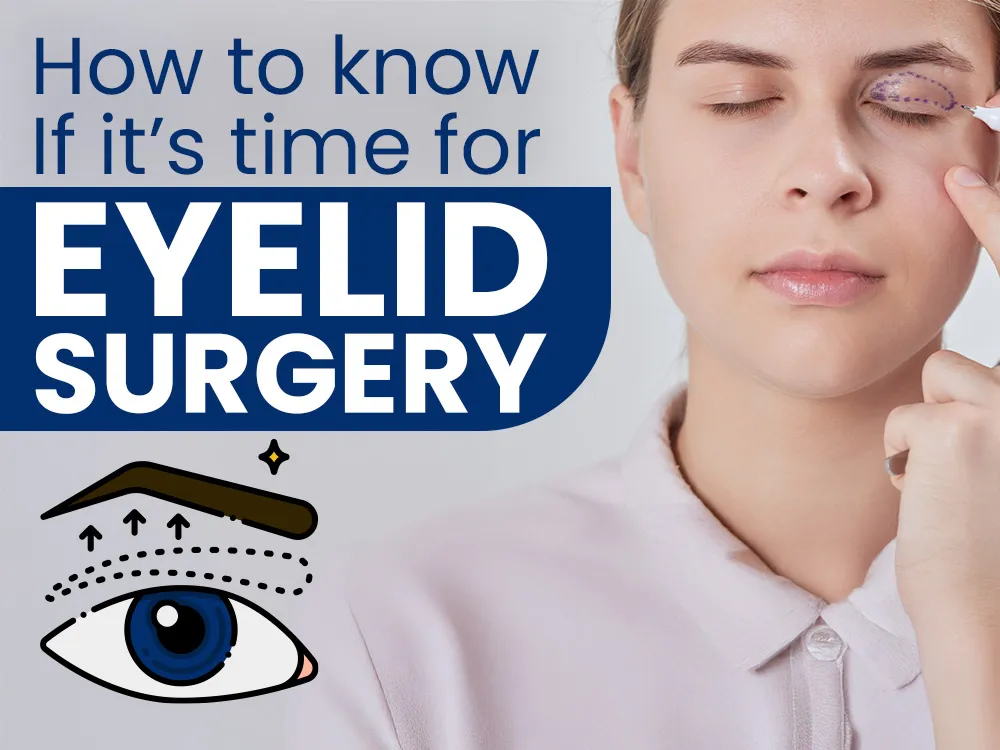
As we age, the appearance of our eyes can significantly change due to various factors such as genetics, environmental exposures, and lifestyle choices. For many, sagging eyelids can affect not only aesthetics but also functionality. Understanding whether it’s time for eyelid surgery can be the first step toward reclaiming a youthful appearance and improving one’s quality of life.
Understanding Eyelid Surgery
Eyelid surgery, also known as blepharoplasty, is a surgical procedure designed to improve the appearance of the eyelids. This may involve the removal of excess skin, fat, or muscle to create a more rejuvenated look. The surgery can be performed on the upper eyelids, lower eyelids, or both, depending on individual needs.
What is Eyelid Surgery?
Eyelid surgery is a cosmetic procedure that entails the modification of the eyelids to improve their shape and functionality. The goal is not only to enhance the aesthetic appeal of the eyes but also to address any issues related to vision obstruction caused by drooping eyelids. The procedure can be performed under local or general anesthesia, and the technique used varies based on individual circumstances.
The Purpose and Benefits of Eyelid Surgery
The primary purpose of eyelid surgery is to restore a youthful and alert appearance. Many patients report feeling more confident post-surgery, as well as experiencing an overall boost in self-esteem. Other notable benefits include:
* Improved vision for individuals with drooping eyelids that obstruct their sight.
* Reduction of puffiness and bags under the eyes, leading to a fresher look.
* Elimination of excess skin that can cause irritation or distress.
* Enhanced symmetry and balance around the face, contributing to overall aesthetic appeal.
In addition to these benefits, eyelid surgery can also have a significant impact on an individual’s emotional well-being. Many patients express feelings of rejuvenation and revitalization, often noting that they feel more approachable and engaged with others. This psychological uplift can be particularly important in social and professional settings, where first impressions are often formed based on appearance. Furthermore, the surgery can be tailored to meet the specific needs of each patient, ensuring that the results align closely with their personal aesthetic goals.
Recovery from eyelid surgery typically involves a few days of rest, during which patients may experience swelling and bruising. Following the surgeon’s post-operative care instructions is crucial for optimal healing. Many individuals find that they can return to their normal activities within a week, although some may choose to take additional time off to fully recover. The long-lasting results of eyelid surgery can provide a significant return on investment, as patients enjoy a more youthful appearance for years to come, often with minimal maintenance required. This makes blepharoplasty not just a cosmetic enhancement, but a transformative experience that can redefine one’s self-image.
Identifying the Need for Eyelid Surgery
Understanding when it may be time to consider eyelid surgery involves recognizing the signs and symptoms that indicate a need for this cosmetic procedure. It’s essential to evaluate not just the physical aspects, but also any functional issues that may arise.
Common Signs and Symptoms
Common indicators that eyelid surgery may be beneficial include:
* Sagging eyelids that may cause vision impairment.
* Persistent bags or puffiness under the eyes.
* Excess skin that folds over the eyelid crease.
* Droopiness in the eyelids, making you appear tired or older than you are.
If you frequently find yourself looking tired or have difficulty applying makeup or seeing properly due to your eyelids, it may be worth discussing this with a healthcare provider.
Medical Conditions Leading to Eyelid Surgery
In some cases, medical conditions such as ptosis, or congenital eyelid disorders, can necessitate eyelid surgery. Ptosis occurs when the upper eyelid droops over the eye and can affect vision. Other conditions might include:
* Thyroid-related eye disease, which can cause protrusion and puffiness.
* Chronic allergies that lead to prolonged swelling.
Consulting with an eye care professional can help determine if these medical issues are affecting your quality of life and whether eyelid surgery might be a viable solution.
The Consultation Process
Once you’ve determined that you might benefit from eyelid surgery, the next step is to schedule a consultation with a qualified surgeon. This process is crucial, as it sets the foundation for your surgical journey.
Preparing for Your Consultation
What to Expect During the Consultation
During the consultation, your surgeon will conduct a physical examination of your eyelids and may photograph your eyes for reference. They will discuss your aesthetic goals, the surgical options available, potential risks, and what you can expect during recovery. Transparently discussing your expectations and concerns can help the surgeon tailor a plan specifically for you.
The Surgery and Recovery Process
Eyelid surgery is typically an outpatient procedure, allowing most patients to return home the same day. Understanding what happens during the surgery and the recovery period can alleviate concerns and prepare you for the process ahead.
An Overview of the Surgery Procedure
The surgery often involves making precise incisions along the natural lines of the eyelids. Excess skin, fat, and muscle may be removed, after which the incisions are closed with fine sutures. The procedure can take one to three hours, depending on the complexity and extent of surgery.
Post-Surgery Care and Recovery
After the surgery, patients typically need time to heal. It is essential to follow the surgeon’s post-operative care instructions carefully, which may include:
* Applying cold compresses to reduce swelling.
* Avoiding strenuous activities for a specified period.
* Keeping head elevated to minimize swelling.
Initial recovery can last for several weeks, but most individuals can return to normal activities within a week or so, depending on the extent of their surgery.
Potential Risks and Complications
As with any surgical procedure, eyelid surgery carries certain risks. Understanding these is crucial for making an informed decision.
Understanding the Risks Involved
Some potential risks associated with eyelid surgery include:
* Infection or bleeding.
* Dry eyes or difficulty closing the eyes fully.
* Scarring or visible incisions.
Discussing these potential risks with your surgeon can help you weigh the benefits against the downsides effectively.
How to Mitigate Potential Complications
To mitigate complications, choose a qualified and experienced surgeon. Ensure you follow all pre- and post-operative care instructions. Being in good health prior to surgery, along with discussing all medications and supplements you are taking, can also help reduce risks.
Ultimately, the decision to undergo eyelid surgery should be well thought out and based on thorough discussions with professional healthcare providers. This procedure can be life-changing, leading to a younger appearance and improved functionality. Take the time to evaluate your options and consider what is best for you.





